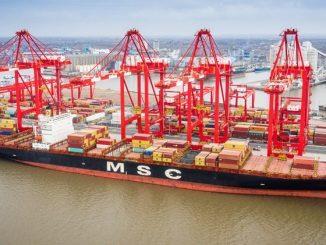
Accompanied roll on/roll off (roro) traffic will grow to an 80% market share by 2050 if driverless HGVs replace much of the country’s conventional lorry and container transport, according to a white paper.
Technical developments and commercial and environmental pressures over the next 30 years are expected to encourage freight operators to explore innovative ways to ship goods through ports.
It would result in a growth in traffic through almost all of the ports in Britain, but particularly through the Humber and on the Western English Channel, according to the paper published by the British Ports Association (BPA).
Its modelling suggests the rollout of autonomous HGVs would lead to a boost for accompanied roro traffic, which accounted for 56% of the market in 2015.
As the increase would be driven largely by lower driver costs, a new type of roro traffic – driverless accompanied – would be created.
The paper said that although there were hurdles to overcome before driverless, ultra-low emission HGVs were operating on the country’s roads, once they were resolved it would lead to Britain’s short sea transport chains becoming more economically efficient and more sustainable.
Read more
- Switch to unaccompanied freight model to avoid Brexit border delays at Channel Ports, says Peel Ports
- DFDS to be first operator to use autonomous vehicle Vera in port operation
- Self-driving trucks are a reality today but the electric vehicle recharging network is still in the future
It concluded that as a greater proportion of roro cargo would be self-loading and unloading, land side resources at British ports by 2050 would need to be focused to a greater extent on marshalling traffic prior to loading and to a lesser extent on stevedoring and storing unaccompanied trailers.
Chris Rowland, MD of MDS Transmodal, which collaborated with the BPA on the paper, said: “Our modelling of a scenario for autonomous and electric vehicles in 2050 suggests that potential developments include a substantial shift of traffic towards ‘driverless accompanied’ roro traffic through ports located on the North Sea and the Western English Channel and this would have implications for roro port operations and the amount of land required.”
The outlined scenario assumed that by 2050, diesel HGVs would be banned and commercially viable ultra-low emission lorries will have become available.
It also assumed that the government will have introduced distance-based road pricing and that the UK will have left the EU but retained a reasonably close economic relationship.














